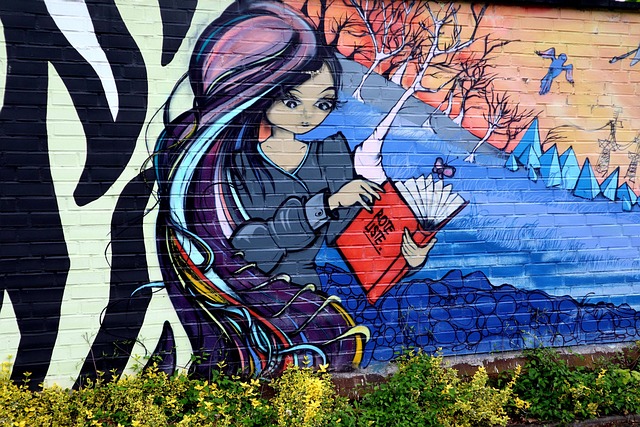# Unveiling AI Art: The Impact of Machine Learning on Visual Aesthetics and Artistic Landscapes
The intersection of artificial intelligence and art is a fascinating domain that has garnered increasing attention in recent years. As machine learning algorithms evolve, they have begun to reshape the creative process, challenging traditional notions of artistry and authorship. This article delves into the transformative effects of AI on visual aesthetics and the broader artistic landscape, exploring how technology is redefining creativity.
## The Evolution of AI in Art Creation
To understand the impact of AI on art, one must consider the historical context of art creation itself. Traditionally, art has been a deeply human endeavor, characterized by individual expression and emotional resonance. However, with the advent of machine learning, particularly in the field of generative algorithms, the landscape has begun to shift. AI systems, such as Generative Adversarial Networks (GANs), have been developed to analyze and replicate artistic styles, enabling machines to produce works that can be indistinguishable from those created by human hands.
In recent years, artists have begun to embrace these technologies, utilizing AI as a collaborative tool rather than a replacement. By integrating machine learning into their creative processes, artists can explore new dimensions of their work, generating pieces that may not have been possible through traditional methods. This collaboration between human intuition and machine precision is fostering a new era of artistic exploration, where the boundaries of creativity are continuously being pushed.
Moreover, platforms like DALL-E and Artbreeder have democratized access to AI art generation, allowing individuals with minimal technical skills to create visually stunning pieces. These tools enable users to manipulate parameters, combine styles, and generate unique artworks, thus broadening the definition of who can be considered an artist in today’s digital age. The result is a vibrant community of creators who are leveraging AI to express their ideas and emotions in innovative ways.
## Redefining Aesthetics and Artistic Value
The emergence of AI-generated art has sparked debates about aesthetics and the value of artistic works. Traditionally, art has been evaluated based on criteria such as originality, emotional depth, and the artist’s intent. However, the introduction of AI challenges these established norms. When a machine generates a piece of art, questions arise: Can a computer truly “create”? What constitutes originality when algorithms are trained on existing works?
Critics argue that AI lacks the emotional depth and personal experiences that human artists bring to their creations. They contend that while AI can produce visually appealing images, it cannot replicate the nuanced understanding of culture, history, and emotion that informs human artistry. Conversely, proponents of AI art assert that the technology can serve as a new medium, offering fresh perspectives and possibilities that enrich the artistic dialogue. This clash of viewpoints highlights the evolving nature of aesthetics in the age of AI, prompting a reevaluation of what it means to create and appreciate art.
Furthermore, the rise of AI-generated art has implications for the art market. As collectors and institutions begin to recognize the value of machine-generated works, the traditional art ecosystem is being disrupted. Auctions for AI art have seen staggering prices, with pieces like “Edmond de Belamy,” created by the Paris-based collective Obvious, fetching over $432,000 at auction. This phenomenon raises questions about authenticity and the role of the artist in a world where machines can generate art autonomously.
## The Future of Collaboration Between Humans and Machines
Looking ahead, the future of art lies in the continued collaboration between humans and machines. As AI technologies advance, they will undoubtedly become more integrated into the creative process, allowing artists to experiment with new forms and mediums. This partnership has the potential to yield groundbreaking innovations in visual aesthetics, as artists harness the power of AI to push the boundaries of their imagination.
One promising avenue is the development of interactive art experiences that respond to audience engagement. Imagine a gallery where visitors can influence the artwork in real-time through their movements or emotions, facilitated by AI algorithms. Such experiences could redefine the relationship between the viewer and the artwork, transforming passive observation into active participation. This shift not only enhances the artistic experience but also fosters a deeper connection between the audience and the creative process.
In addition, AI can assist artists in overcoming creative blocks and expanding their artistic vocabulary. By analyzing vast datasets of existing artworks, AI can suggest new directions, styles, or themes that an artist might not have considered. This collaborative approach can lead to unexpected discoveries, inspiring artists to explore uncharted territories in their work. As a result, the partnership between human creativity and machine learning is likely to yield a rich tapestry of artistic expression that reflects the complexities of our contemporary world.
## Conclusion: Embracing the AI Art Revolution
The impact of AI on visual aesthetics and artistic landscapes is profound and multifaceted. As machine learning continues to evolve, it is reshaping our understanding of creativity, authorship, and value in art. While there are valid concerns regarding the implications of AI-generated works, it is essential to recognize the potential for collaboration between humans and machines.
As we move forward, embracing the AI art revolution offers exciting opportunities for artists and audiences alike. By harnessing technology as a tool for creativity, we can unlock new dimensions of artistic expression that challenge our perceptions and inspire future generations. The world of art is expanding, and with it, the possibilities for innovation and exploration are limitless. In this brave new world, the fusion of human intuition and machine intelligence promises to redefine the very essence of what it means to create and appreciate art.

